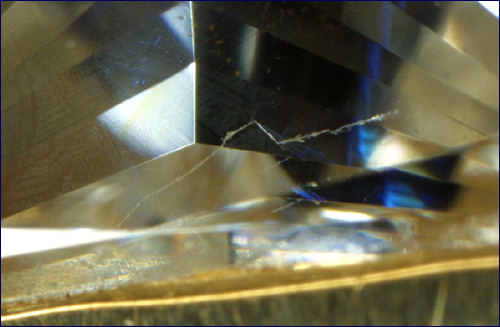| Diagnostics of diamonds treated by laser drilling | |||||||
|
The most accurate method for identifying a diamond that contains laser-drilled holes is examining the diamond under magnification. The diagnostics implies the use of a gemological binocular microscope, equipped with a fiber-optic light source and accessories for illuminating the studied sample in accordance with the "dark field" technique. Laser drilling is often followed by fracture filling: fractures are filled through a laser-drilled hole. In such a case, diagnostics of diamonds treated by fracture filling should be also performed.
|
|||||||
